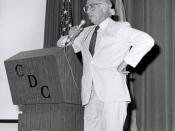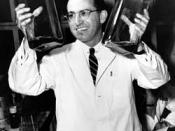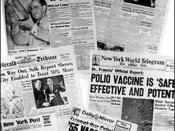Polio
Polio is a contagious disease affecting humans and some primates. Three closely related viruses cause polio. In serious cases Polio attacks the spinal cord and brain stem and eventually causes paralysis. In Polio the muscular, brain and nervous systems are affected, and is spread by contaminated food, water, hands and eating utensils.
Polio was one of the most feared diseases in the 20th century. The connection between the neurological symptoms of Polio and the more typical form of the disease was suspected by only a handful of researchers in the first decade of the 20th century, but an accurate study of Polio was accepted only in the 1930's, when science gave the power to scientists to trace the disease in all of its phases.
Many Polio cases never advance beyond the stage termed the "minor illness of Polio." Once the Poliovirus has been ingested, the Poliovirus multiplies in the cells lining the intestine and invades the lymphatic system and the lymph nodes swell around the intestines and neck.
The symptoms may not appear at all or the person may have a fever and sore throat. In more severe cases, the patient has the beginning of neurological symptoms, indicating that the virus has infected the spinal cord. Acute Polio leaves the patient with permanent motor impairment ranging from mild muscular weakness to severe crippling disability. Patients can usually regain some of the motor function lost during the active disease through physical therapy.
As the disease became more prominent, the biomedical community responded on three fronts; the attempted prevention of transmission by quarantining infected people, the treatment of paralytic cases in the acute and recovery phase and the development of a vaccine.
In 1920, Philip Drinker of the Harvard School of Public Health introduced the iron lung, a respirator that copied...



Polio
I never really knew the specifics about polio, which my aunt had. I've learned a lot from reading your essay. Great job, and thanks.
3 out of 4 people found this comment useful.